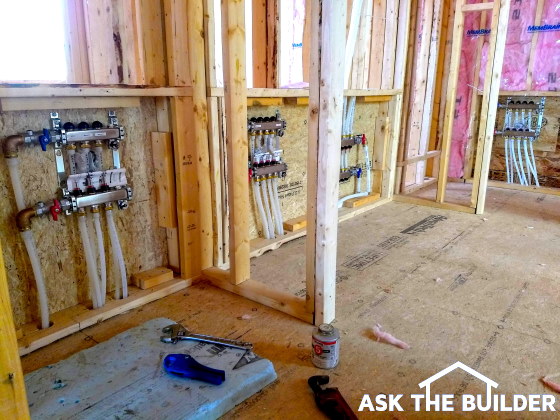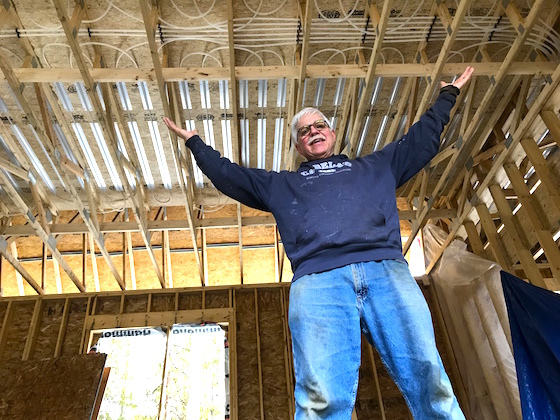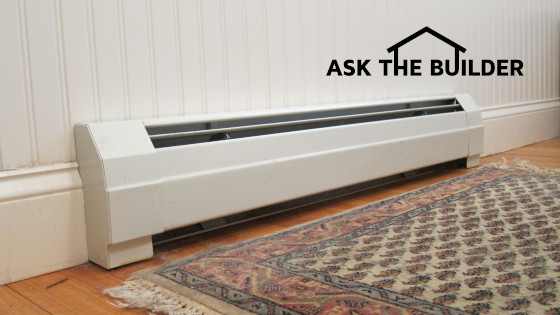Best Heating System for House?

Best Heating System for House | These are radiant heating distribution manifolds. Hot water enters the manifold and it’s sent through the smaller tubing to heat the floors in this house. It then returns to the boiler to get reheated. Copyright 2022 Tim Carter
What is the Best Heating System for House? - Well...
You might overhear several pickup truck owners bragging about how their Ford or Chevy truck is better than all the rest. It might even be a Ram or Toyota owner. The odds of any of them convincing the other to change brands is more remote than rainfall in the Atacama Desert. This same debate has raged for years with HVAC contractors about what is the best heating system.
I don’t know that there’s a definitive answer, but fortunately I’ve had enough experience with several systems that I can weigh in and give you some food for thought should you be in a position to build a new home or be involved in a massive remodeling job where you just might have the budget and ability to transform the way your home might be heated.
I grew up in Cincinnati, Ohio. The homes built in the late 1800s in the Queen City almost all were heated with hot water or steam radiators. These houses were built long before air conditioning had been invented. Radiant heat is luxurious as I currently have it in my New Hampshire home. I’ll share more about this in a moment.
Gravity Furnaces
Some older homes had monster furnaces that worked on gravity. They’d heat up the air inside a giant round furnace and it would float up through metal ducts into the house. Cold air is heavier and it would drop back down into the basement to be reheated by the wasteful burner. More modern houses transitioned to forced hot air with a blower pushing air up into the rooms. This same air handler would deliver cool air in the summer if you had an air conditioning system too.
Forced-Air Systems
Forced-air systems offer lots of advantages for purifying the air in your home and adding humidity should it be needed. For these systems to work best, the supply and return ductwork needs to be carefully sized and installed so all rooms are comfortable.
Coal Stoves
I have a very good friend here in New Hampshire that heats with anthracite coal. He has two coal stoves and only uses the one when the temperature drops below 0 F for an extended time. One advantage to using coal is he knows when it’s all delivered in the fall, he’ll never be cold at all in the winter. He has all his required fuel. If you’ve ever lost power and been cold, you know how well my friend sleeps at night.
Propane - Natural Gas Systems
You can’t say that about me as I depend on three propane deliveries per winter season to keep my tank full. You may depend on natural gas to flow to your home each day. What happens if there’s some national shortage of gas? How will you keep warm? The disadvantage to my friend’s archaic coal stove is it’s a little dusty in the house and he needs to feed it twice a day.

Above me are floor trusses. See the Uponor hePEX tubing in the Uponor radiant heat transfer plates? No wonder I'm so happy! Copyright 2022 Tim Carter
Radiant Floor Heat
What about radiant floor heat? I have it in my home and it’s quite possibly the best form of heating I’ve ever experienced. The entire floor of my basement is toasty warm. It’s magical to step out of a shower onto a warm tile floor. I have six different zones in my system so I can save on fuel by using programmable thermostats to keep rooms in several zones cooler when I’m not in them.
You can also install radiant heat using sleek baseboard radiators if you can’t afford to put the heating tubes under each floor in your home. My house has both radiant floor heating and these baseboard heaters. The plastic tubes that supply the heat to the radiators install just like electric cables. In just a few hours, two workers can easily run all the tubing for baseboard radiators in a modest home.
Modern boilers and forced-air furnaces have modulating technology. This means the burner works like the one on your gas or electric stove. When you cook, you can adjust the amount of heat so you can boil water on high heat or just apply enough heat to simmer a tasty gravy. The same thing happens when a part of your house calls for heat. The boiler or furnace only produces enough heat to satisfy that demand no matter what it is. This saves energy as less heat is sent outdoors with the exhaust gas when the burner is on low.

This is a sleek baseboard heater. Hot water enters the heater at one end flowing through a large tube to which radiating aluminum fins are attached. Air is heated and floats up softly into the room. These are very effective.
Electric Heat
Perhaps the most basic heating system you can install is one that just uses electricity. Simple baseboard radiators or portable ones can be used for heating. There are no moving parts to speak of but the downside is electricity costs may be quite high where you live.
Heat Pumps
Heat pumps are electric heating systems, but they’re very complex machines. They do double duty as air conditioners in the summer. Modern heat pumps are quite efficient but once again, electricity may be pricey where you live. What’s more, electricity is quite possibly the least reliable heating fuel that you can choose. The news is littered with stories any time of year about hundreds of thousands of people without power when large storms damage power lines.
What am I going to do when I build my next home? I’m going to install radiant floor heating in the entire house and have a wood stove backup heating system. I’ll stock in enough dried oak firewood to provide a few months of heat should propane become scarce.
Column 1443
3 Responses to Best Heating System for House?